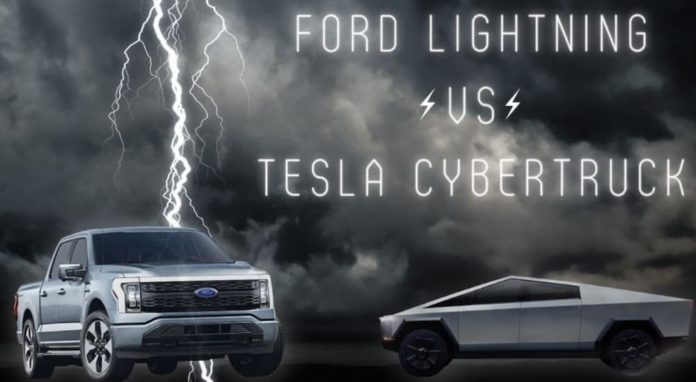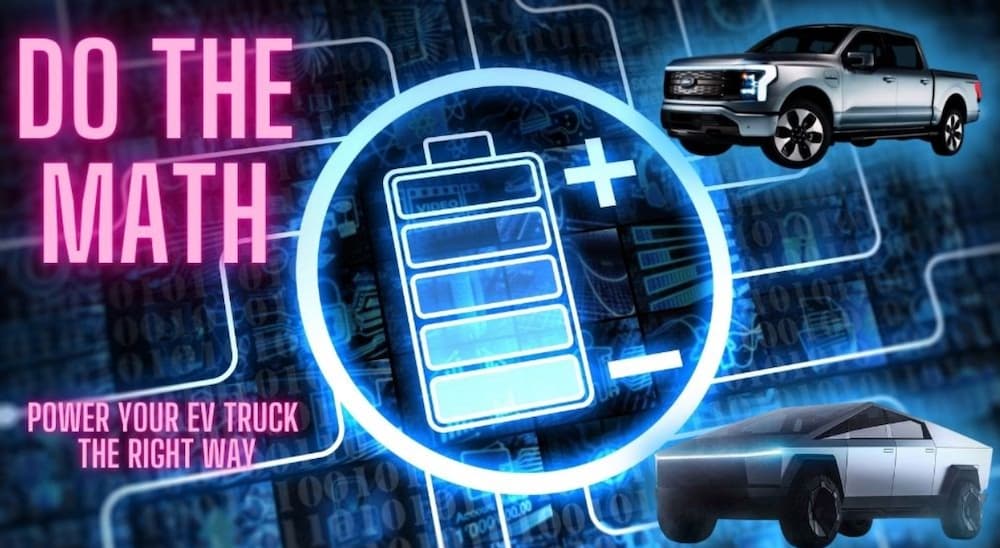If you’re at all interested in an electric pickup, then you’re probably keeping a close eye on these two popular models that have been bandied about quite a bit. Looking at the 2022 Ford F-150 Lightning vs 2022 Tesla Cybertruck, one of the most important considerations to have in mind is what it will take to keep them charged. Both of these models support at-home charging using an outlet, as well as DC Fast Charging at public stations when you’re out on the road.
Personally, those aren’t the kinds of things that I’m interested in. Any rube can charge their EV pickup at home or at a public station – but I’ve no desire to see my electric bill spike or to have to wait around for someone wearing a scarf ironically to finish his kombucha slushy and unplug his vehicle. Oh no, those methods aren’t for me – there’s only one form of charging that I’m interested in. I want to know how practical these two EV pickups are when it comes to hooking up humans as charging stations!
How Human Charging Works
According to science, humans produce about 100 watts of power while sitting at rest, only a small amount of that is used for silly things like making our hearts beat and breathing. For several minutes, humans can pretty comfortably produce 300 or 400 watts of power, and in short bursts we can even crank out 2,000 watts of power. A lot of that power gets wasted as heat – you go for a run and you produce a lot of power, some of it is used to breathe, but a lot of it just becomes heat as you sweat and wish for death.
When a person is sitting at rest, however, about 80% of the power they’re producing is wasted as heat. That means we’re pumping out about 80 watts of power that completely goes to waste, heating up rooms and fogging the windows of parked cars. There have already been some attempts at capturing some of this power output as usable energy, but so far, only small amounts have actually been useable. In the future, however, it’s likely that those 80 watts will be able to be put to good use.
The Math Behind it All
When charging a battery for an electric truck, you need to know the vehicle’s battery capacity, which represents how much energy it can store. This is listed as kilowatts per hour (kWh), which isn’t a measure of kilowatt usage in an hour, but is instead the amount of energy used by a 1,000 watt appliance running for one hour (1 kilowatt = 1,000 watts). Charging a battery in an EV takes an amount of time depending on how much charge is available compared to the capacity of the battery. Simply put, a 100 kWh battery, at a 10 kW charger, would take 10 hours to charge.
The 2022 Ford F-150 Lightning Battery Capacity
Unfortunately, Ford has not released official numbers regarding the capacity of the two battery options for the F-150 Lightning. That being said, from the information they have provided, some rough approximations can be made about the capacity. This has resulted in estimates of about 125 kWh for the standard-range battery and about 170 kWh for the extended-range battery.
Since one person can provide about 80 watts of power (assuming sufficiently advanced technology to utilize all the wasted power while just sitting around), it would take a single person about 1,565 hours to fully charge the standard battery in the F-150 Lighting or about 2,125 hours to fully charge the extended-range option. So it’d take around 46 days or 88 days, depending on the model and its battery, of a person just sitting around connected to the F-150 Lightning to fully charge it.
The 2022 Tesla Cybertruck Battery Capacity
Sadly, things don’t look much better for the Cybertruck. Estimates say it likely has a 200 kWh battery – far more energy capacity than either F-150 Lightning model. This means that we’re looking at about 2,500 hours or more than 104 days with a person connected to the Cybertruck, just doing nothing in order for it to be fully charged. I don’t know about you, but I don’t have that kind of time on my hands!
Clear Results and a Clearer Solution
There’s a clear problem here, of course, in that a single person, doing nothing, just doesn’t put out enough excess energy to charge either of these EV trucks. There are two options: forget about using human power, or increase the output through the use of additional people. Seems pretty simple to me – once my human farms are up and running, all I need is about 2,000 people properly connected to charge one of these vehicles in just over an hour. Thanks, science!
Editor’s Note: For the time being, this is all purely theoretical since the best researchers have been able to do is capture about three-thousandths of a watt of energy from heat given off by the human body. At that rate, the author would require a “human farm” with some 50 million people in order to charge a vehicle. We assume he would never begin such a horrifying and unprecedented operation, right? Right!?













